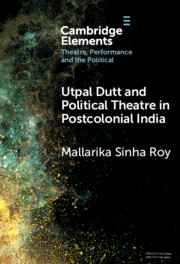Element contents
Utpal Dutt and Political Theatre in Postcolonial India
Published online by Cambridge University Press: 21 March 2024
Summary
- Type
- Element
- Information
- Online ISBN: 9781009264068Publisher: Cambridge University PressPrint publication: 11 April 2024



